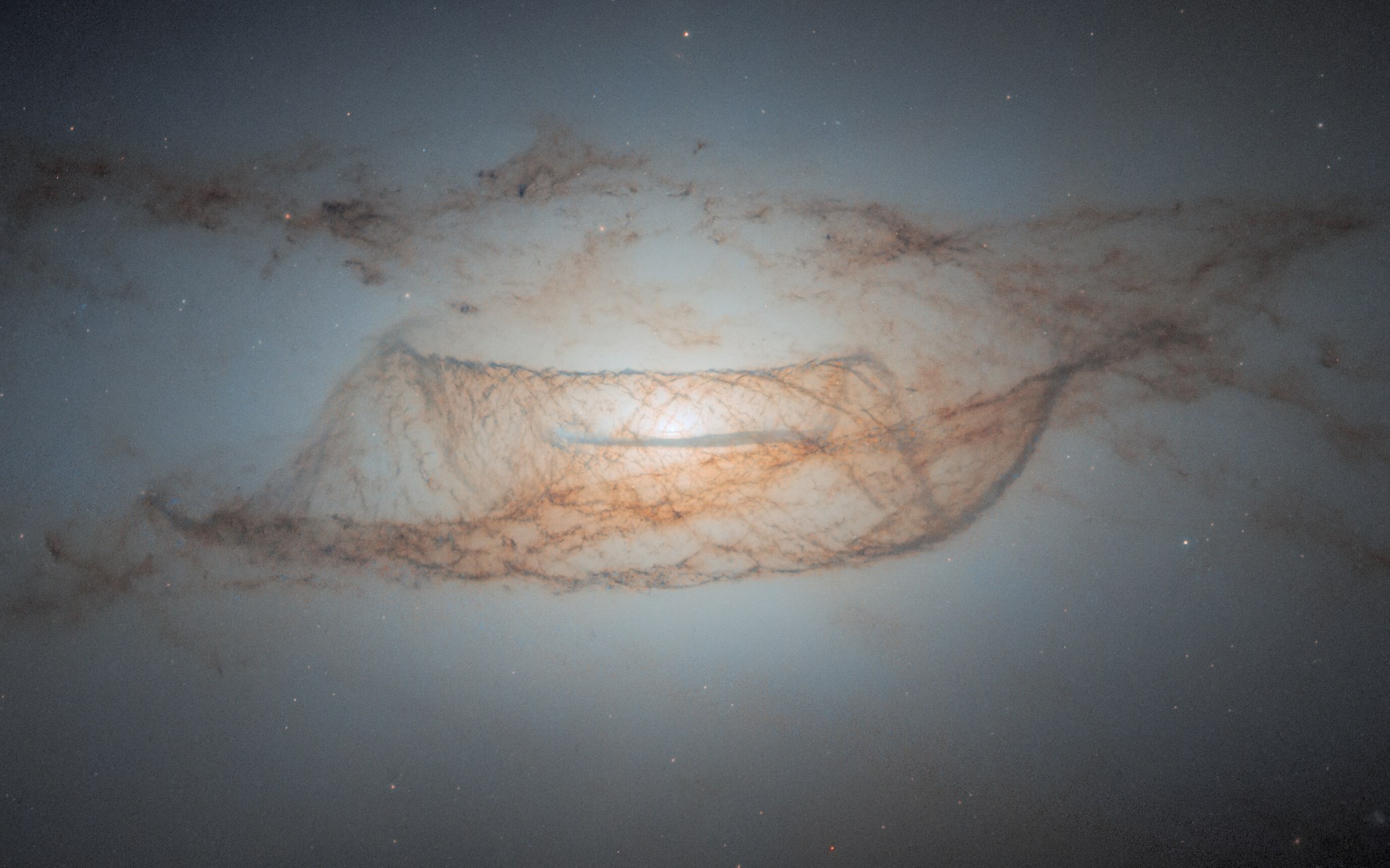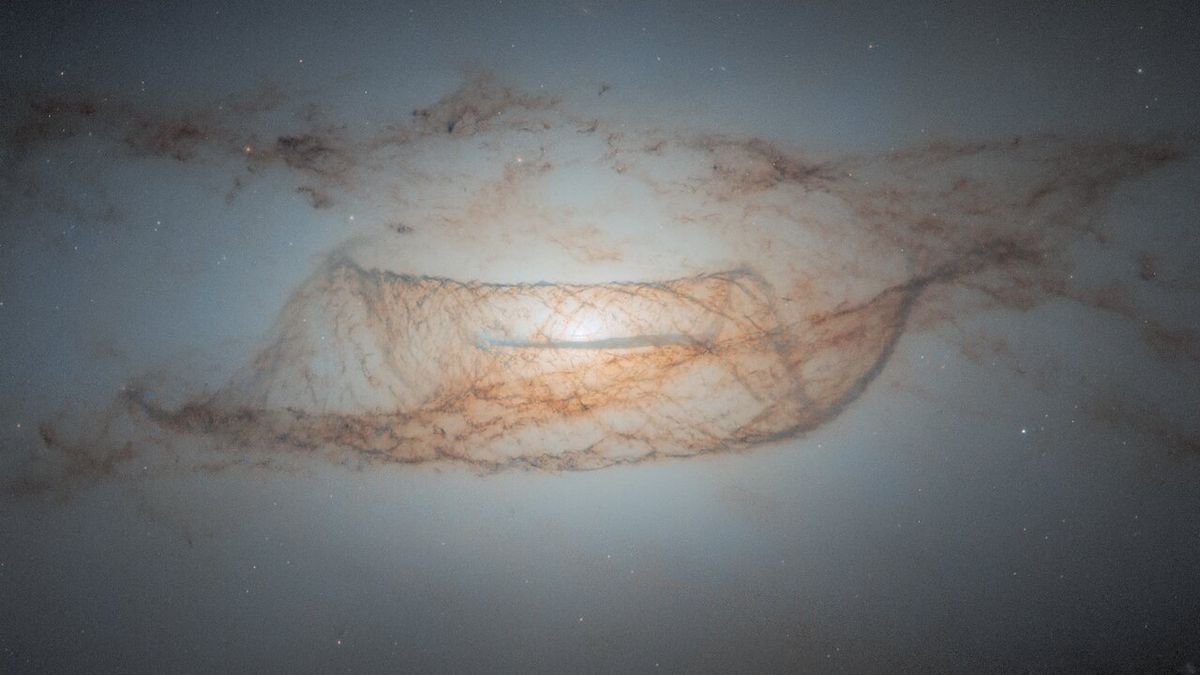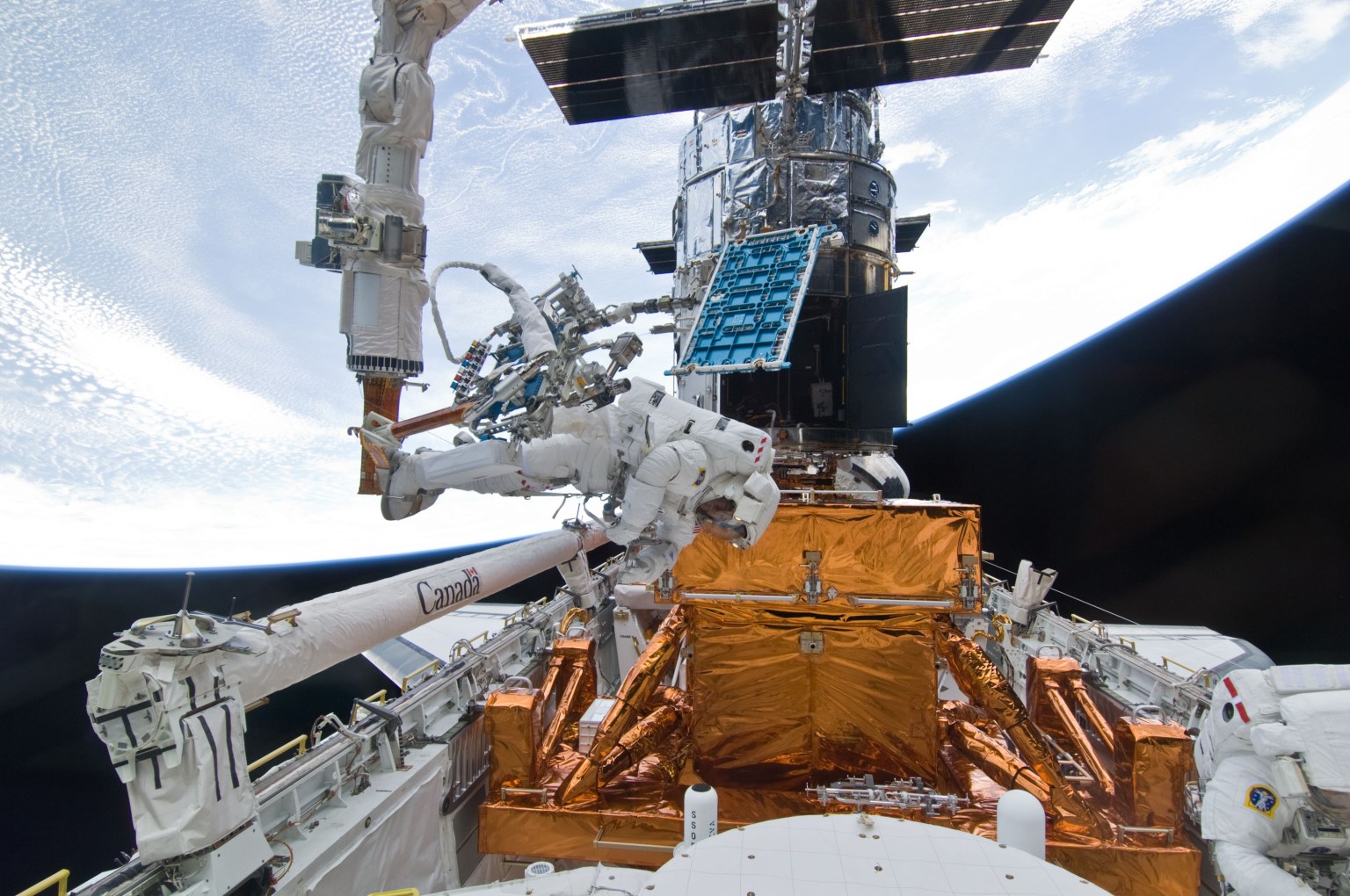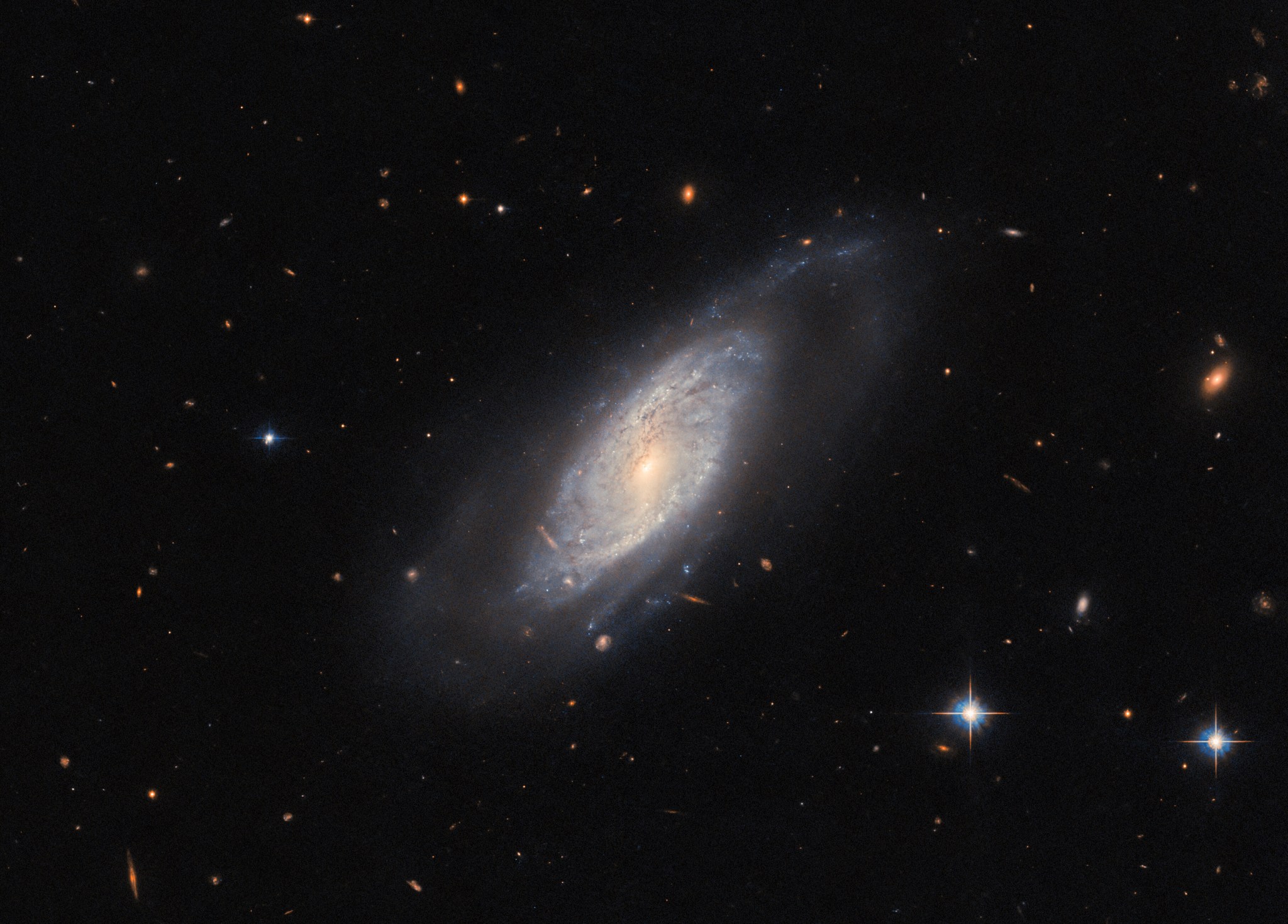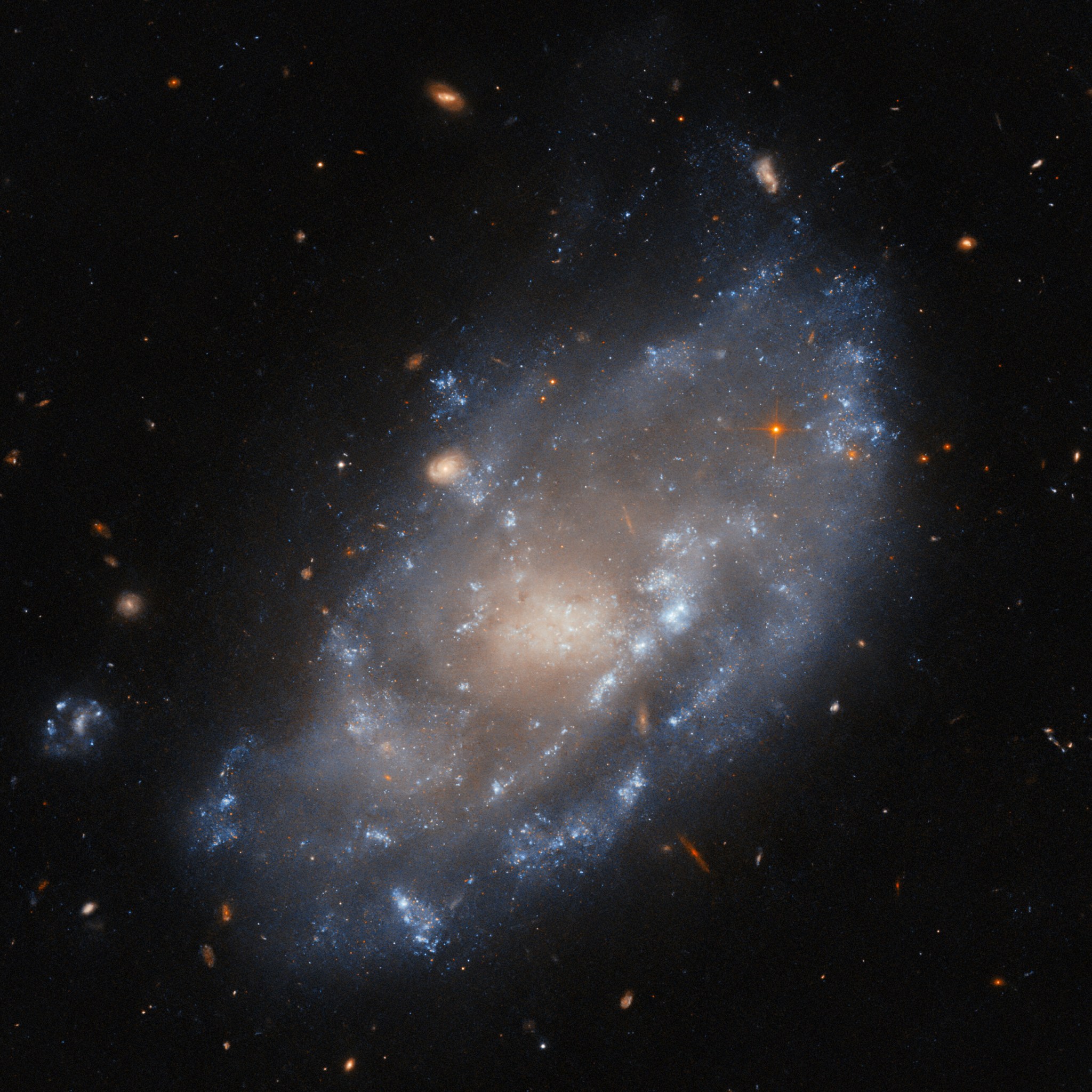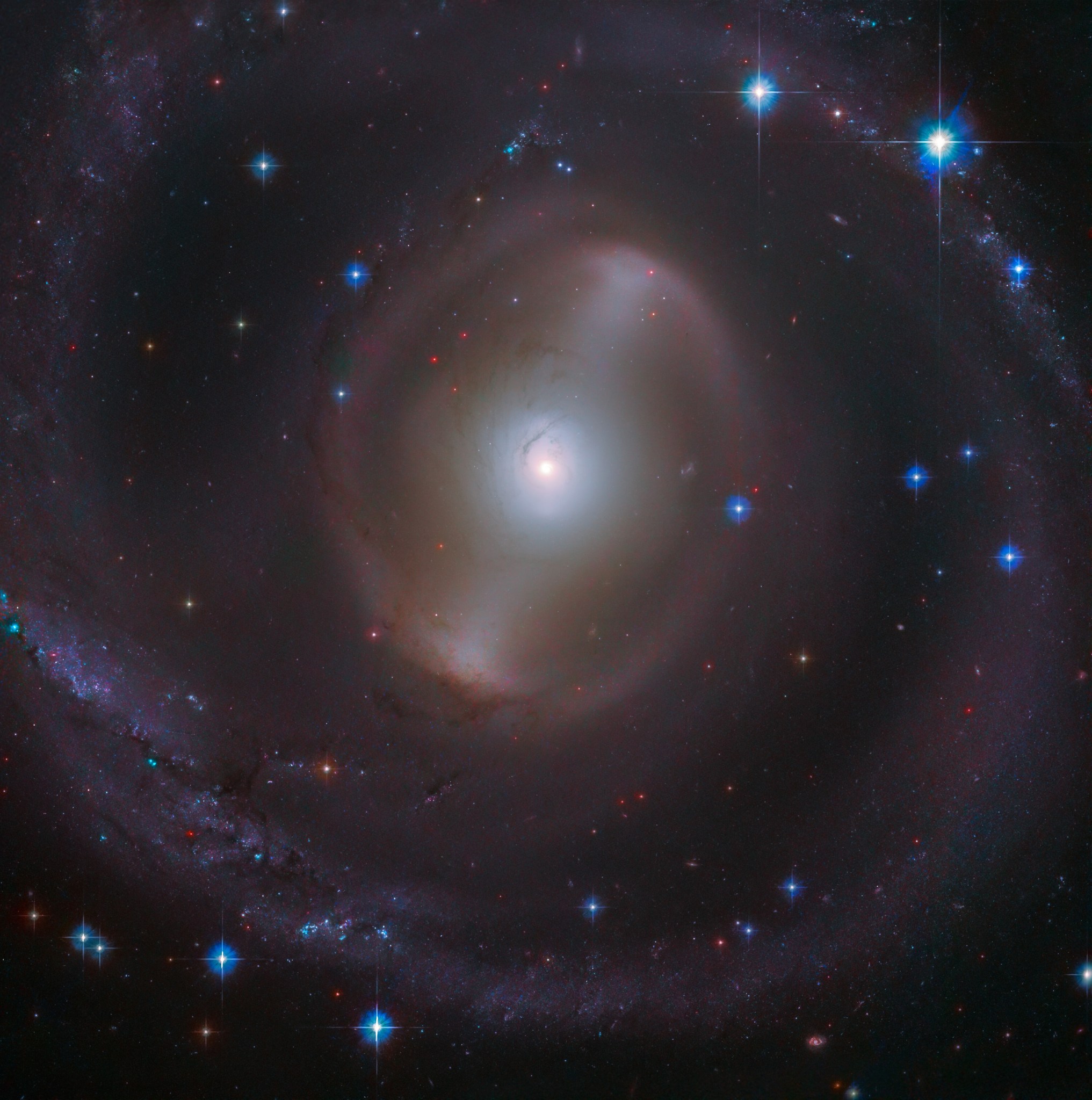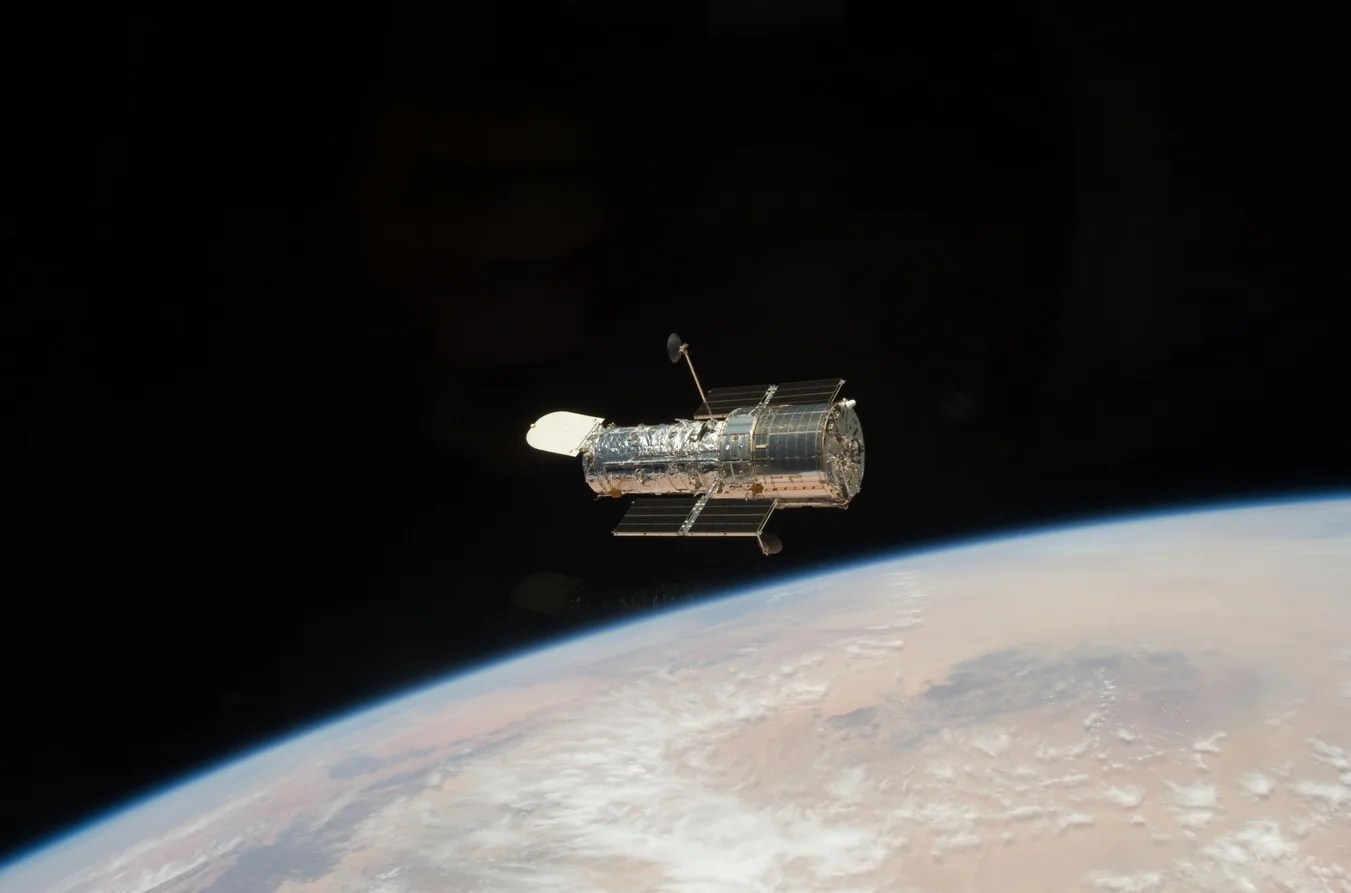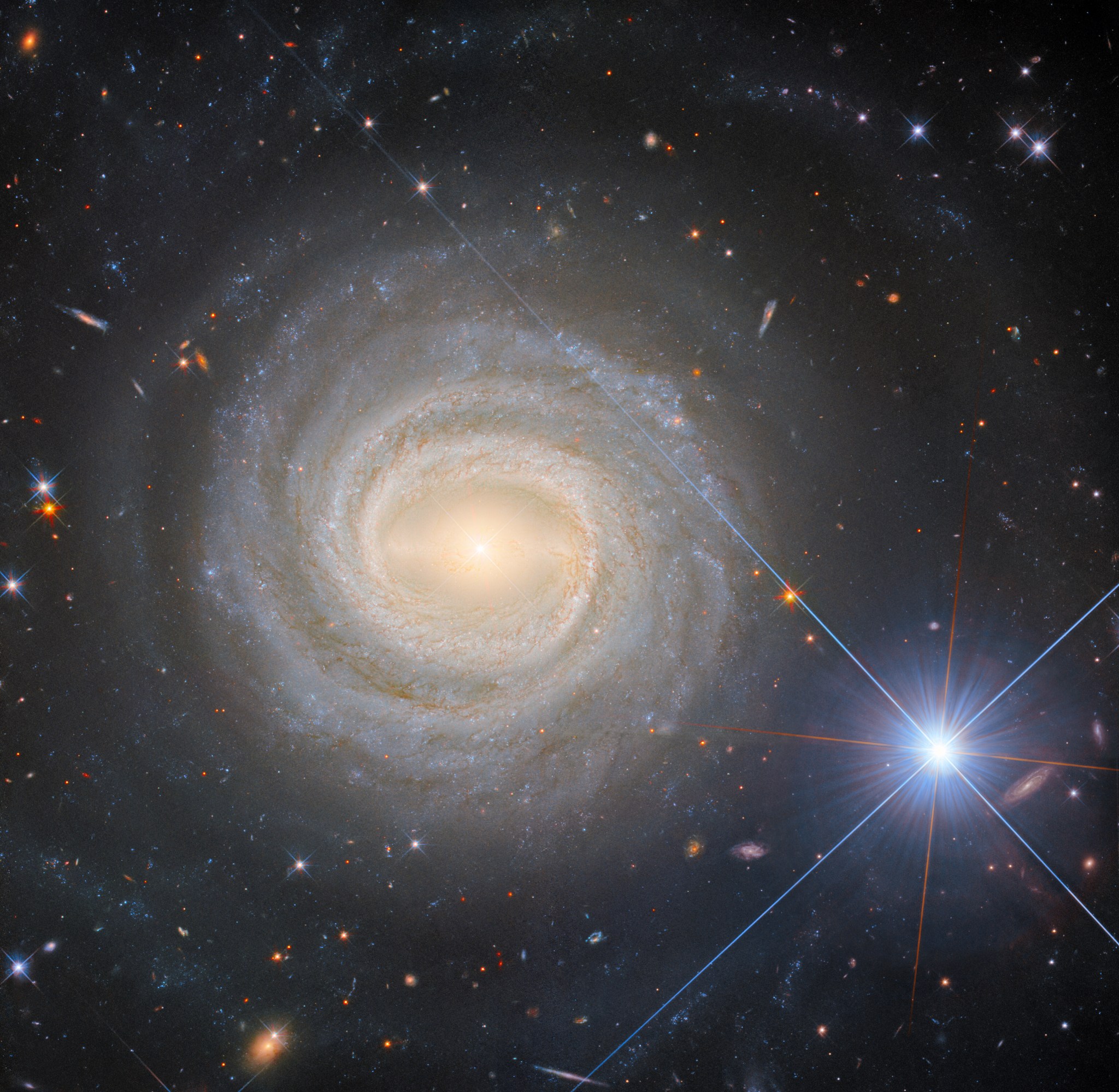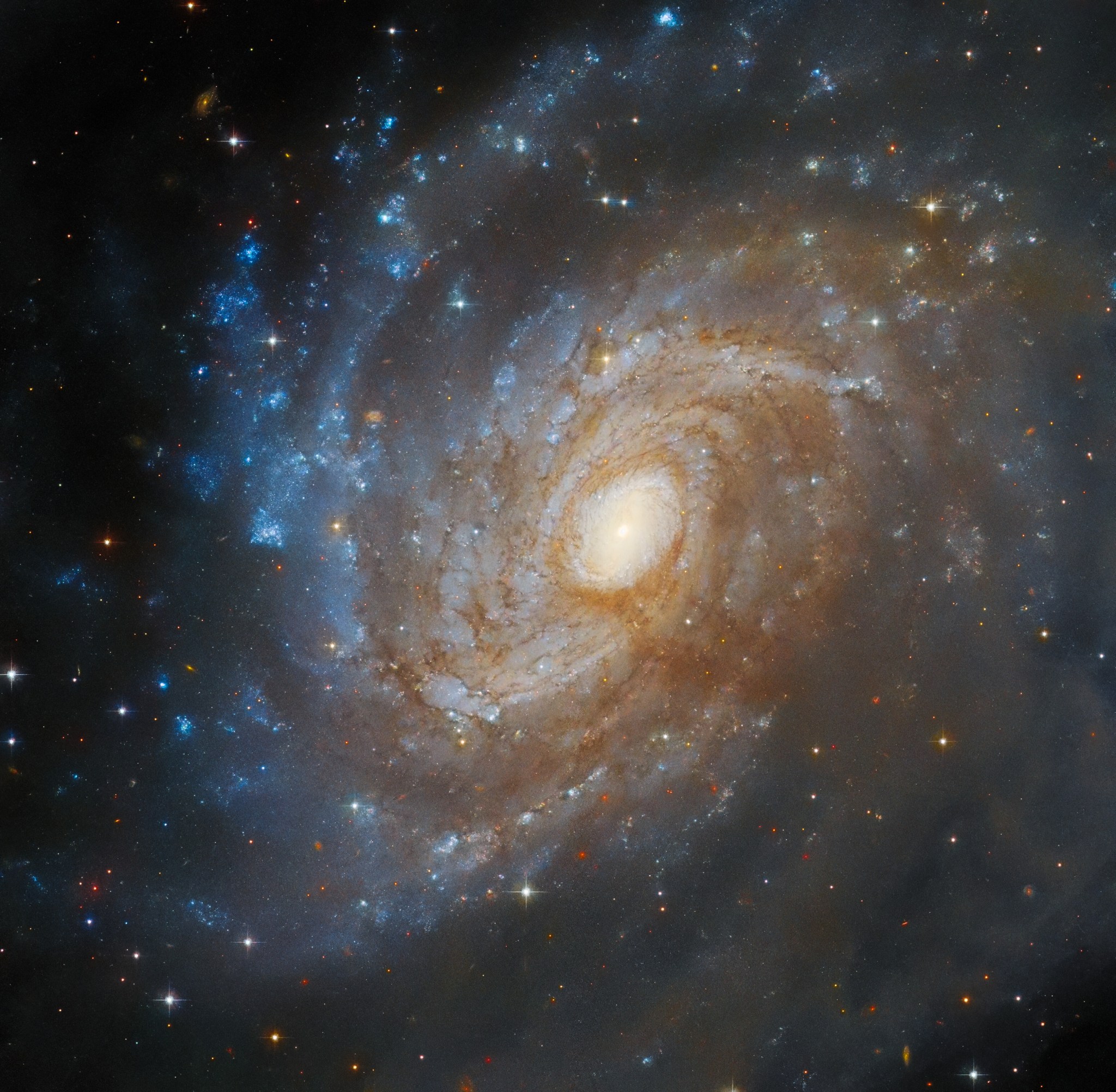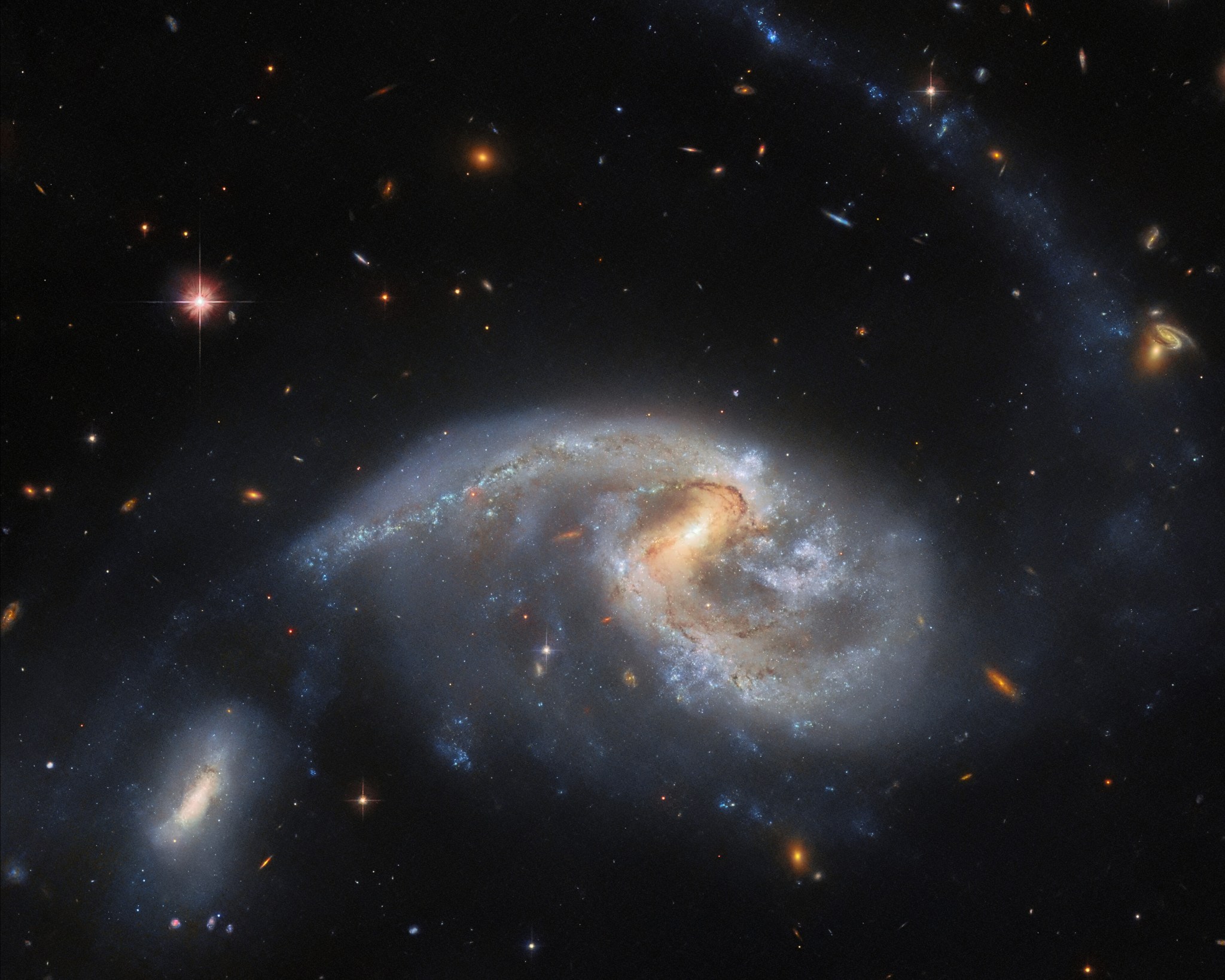2 min read Hubble Views Cosmic Dust Lanes This Hubble Space Telescope image showcases a nearly edge-on view of the lenticular galaxy NGC 4753. ESA/Hubble & NASA, L. Kelsey Featured in this new image from the NASA/ESA Hubble Space Telescope is a nearly edge-on view of the lenticular galaxy NGC 4753. Lenticular galaxies have an elliptical shape and ill-defined spiral arms. This image is the object’s sharpest view to date, showcasing Hubble’s incredible resolving power and ability to reveal complex dust structures. NGC 4753 resides around 60 million light-years from…
Read MoreTag: Hubble Space Telescope
Dusty galaxy looks like a cosmic net in gorgeous new Hubble Telescope photo
A new Hubble image highlights the intricacies of a distant galaxy glowing with a bright white core surrounded by complex dust structures. A new image from the Hubble Space Telescope captures the sharpest view yet of the lenticular galaxy NGC 4753. The photo, released on Monday (May 13), offers a nearly edge-on view of the galaxy, revealing its bright central bulge. Lenticular galaxies are a cross between spirals and ellipticals; they exhibit an elliptical shape but have ill-defined spiral arms. Given NGC 4753’s low-density environment and complex structure, this particular…
Read MoreHubble Celebrates the 15th Anniversary of Servicing Mission 4
8 Min Read Hubble Celebrates the 15th Anniversary of Servicing Mission 4 Michael Good (on the end of the shuttle’s Remote Manipulator System) works to refurbish and upgrade Hubble during Servicing Mission 4. Credits: NASA Fifteen years ago, human hands touched NASA’s Hubble Space Telescope for the last time. As astronauts performed finishing tasks on the telescope during its final servicing mission in May 2009, they knew they had successfully concluded one of the most challenging and ambitious series of spacewalks ever conducted. But they couldn’t have known at the…
Read MoreHubble Glimpses a Star-Forming Factory
2 min read Hubble Glimpses a Star-Forming Factory This image from the NASA/ESA Hubble Space Telescope highlights the spiral galaxy UGC 9684. The celestial object showcased in this image from the NASA/ESA Hubble Space Telescope is the spiral galaxy UGC 9684, which lies around 240 million light-years from Earth in the constellation Boötes. This image shows an impressive example of several classic galactic features, including a clear bar in the galaxy’s center, and a halo surrounding its disk. The data for this Hubble image came from a study of Type-II…
Read MoreHubble Hunts Visible Light Sources of X-Rays
2 min read Hubble Hunts Visible Light Sources of X-Rays This NASA/ESA Hubble Space Telescope image features the dwarf galaxy IC 776. ESA/Hubble & NASA, M. Sun This NASA/ESA Hubble Space Telescope image features the dwarf galaxy IC 776. This swirling collection of new and old stars is located in the constellation Virgo, in the Virgo galaxy cluster, 100 million light-years from Earth. Although IC 776 is a dwarf galaxy, it’s also classified as a SAB-type or ‘weakly barred’ spiral. This highly detailed Hubble view demonstrates that complexity. IC 776…
Read MoreHubble Spots a Magnificent Barred Galaxy
This NASA/ESA Hubble Space Telescope images showcases the galaxy NGC 2217. ESA/Hubble & NASA, J. Dalcanton; Acknowledgement: Judy Schmidt (Geckzilla) The magnificent central bar of NGC 2217 (also known as AM 0619-271) shines bright in the constellation of Canis Major (The Greater Dog), in this image taken by the NASA/ESA Hubble Space Telescope. Roughly 65 million light-years from Earth, this barred spiral galaxy is a similar size to our Milky Way at 100,000 light-years across. Many stars are concentrated in its central region forming the luminous bar, surrounded by a set of tightly wound spiral arms.…
Read MoreNASA’s Hubble Pauses Science Due to Gyro Issue
2 min read NASA’s Hubble Pauses Science Due to Gyro Issue The Hubble Space Telescope as seen from the space shuttle Atlantis (STS-125) in May 2009, during the fifth and final servicing of the orbiting observatory. NASA NASA is working to resume science operations of the agency’s Hubble Space Telescope after it entered safe mode April 23 due to an ongoing gyroscope (gyro) issue. Hubble’s instruments are stable, and the telescope is in good health. The telescope automatically entered safe mode when one of its three gyroscopes gave faulty readings.…
Read MoreHubble Captures a Bright Galactic and Stellar Duo
2 min read Hubble Captures a Bright Galactic and Stellar Duo This image from the NASA/ESA Hubble Space Telescope features the barred spiral galaxy NGC 3783. ESA/Hubble & NASA, M. C. Bentz, D. J. V. Rosario This image from the NASA/ESA Hubble Space Telescope features NGC 3783, a bright barred spiral galaxy about 130 million light-years from Earth that also lends its name to the eponymous NGC 3783 galaxy group. Like galaxy clusters, galaxy groups are aggregates of gravitationally bound galaxies. Galaxy groups, however, are less massive and contain fewer members than galaxy…
Read MoreHubble Spots a Galaxy Hidden in a Dark Cloud
2 min read Hubble Spots a Galaxy Hidden in a Dark Cloud This Hubble image features the spiral galaxy IC 4633. ESA/Hubble & NASA, J. Dalcanton, Dark Energy Survey/DOE/FNAL/DECam/CTIO/NOIRLab/NSF/AURA; Acknowledgement: L. Shatz The subject of this image taken with the NASA/ESA Hubble Space Telescope is the spiral galaxy IC 4633, located 100 million light-years away from us in the constellation Apus. IC 4633 is a galaxy rich in star-forming activity and also hosts an active galactic nucleus at its core. From our point of view, the galaxy is tilted mostly…
Read MoreHubble Peers at Pair of Closely Interacting Galaxies
2 min read Hubble Peers at Pair of Closely Interacting Galaxies This NASA/ESA Hubble Space Telescope image features Arp 72. ESA/Hubble & NASA, L. Galbany, J. Dalcanton, Dark Energy Survey/DOE/FNAL/DECam/CTIO/NOIRLab/NSF/AURA This image from the NASA/ESA Hubble Space Telescope features Arp 72, a very selective galaxy group that only includes two galaxies interacting due to gravity: NGC 5996 (the large spiral galaxy) and NGC 5994 (its smaller companion, in the lower left of the image). Both galaxies lie approximately 160 million light-years from Earth, and their cores are separated from each…
Read More